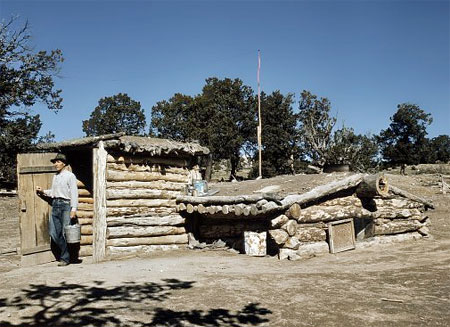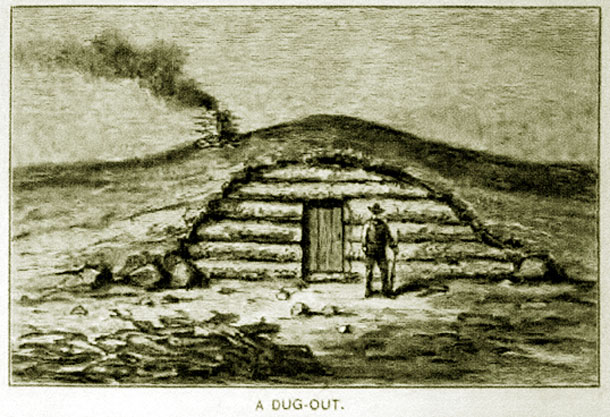|
Dugout Homes
Dugout homes may seem like a far-fetched idea to many. Imagine
a scenario like this in your city. Because of a natural disaster
or martial law situation, access to local TV or radio broadcast
news becomes severely restricted so you don't have all of the
facts about how to protect yourself and your family in the event
things get worse in the city.
 Dugout Home
Dugout Home |
Since most banks will be closed in this
situation, you won't have access to funds in your checking
account and if a government agency decides to freeze assets
of your city's banks, things can go sour for you financially.
And if you can't get to the grocery stores because they're
either out of food for customers or closed altogether, how
will you get food for yourself and your family?
|
Or if most of the houses in the city, including yours, are destroyed
because of a natural disaster, where can you find decent shelter
or where can you go to build an emergency shelter? It may seem
far-fetched, but the reality is that we're living in times of
uncertainty and there's still the possibility of terrorist attacks
although there haven't been any in the United States since 9/11.
|
A dugout home is a place for humans
and animals which is dug into the ground. One of the most
popular types of dugout homes in the United States is the
sod home, rock home or wooden home built dugout style and
this was often used by pioneers in the Midwestern section
of the country throughout the 19th century.
|
 |
Countries all over the world have their own versions of dugout
homes. In Africa, some of the Berbers built dugout homes as protection
from harsh summers. And this was also the case in the small Australian
city of Coober Pedy. China has dugout homes called yeodongs that
are dug into hillsides and they need little heating or cooling.
About 40 million people in China live in dugout homes. The city
of Cappadoccia in Turkey has 36 underground cities, and the early
Christians used these as hiding places from their persecutors.
In order to build a dugout home out of sod, early settlers chose
an area with dry and sandy ground. The main tools were a shovel,
a large axe and a pick. Sod is basically the layer of ground which
includes grass, the grass's roots and the dirt that's connected
to the grass's roots.
Knowing Your Butt from a Hole in the Ground ...
But the easiest kind of dugout home to build is one where you
actually find a hole in the ground that is livable with little
or no work and basically put a roof over it. Many survivalists
have learned this trick while trekking across the wilderness.
A depression or hole in the ground covered with branches, twigs,
leaves or thatch can make a useful temporary dugout home in extreme
temperatures.
Dugout homes are also sometimes called mud huts, pit houses or
earth lodges. Besides the doomsday scenario painted above dugout
homes have been used for years in times of warfare and for hunting
purposes.

Around the Civil War times the U. S. Government let people homestead
land as a method of claiming ownership. Upon the Midwest prairies
where there were few trees, many homesteaders would create dugout
homes by digging into the side of a slow rolling hill. They would
then fortify the front with blocks of sod, mud or wood if they
could find it.
Not Just for Baseball Players ...
Today, campers, hikers, hunters, farmers, environmentalists,
survivalists and other are still taking advantage of the low cost
and easy to build dugout homes. Dugout homes may not be everyone's
cup of tea but they can be very utilitarian under the right circumstances.
Can you dig it?
|

